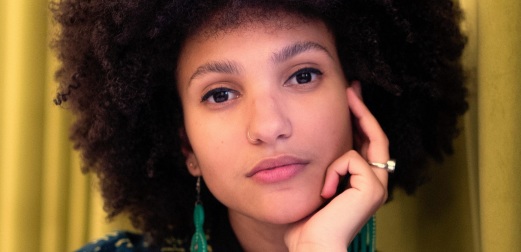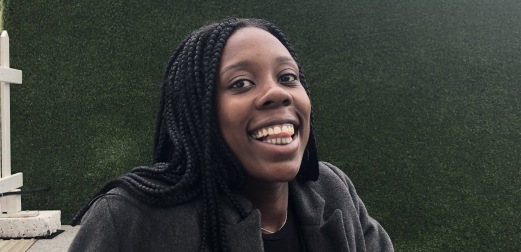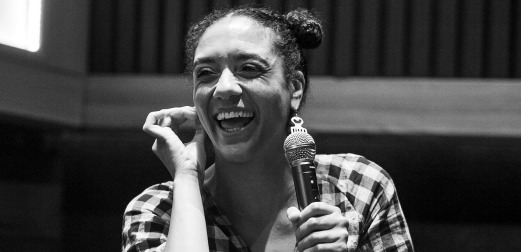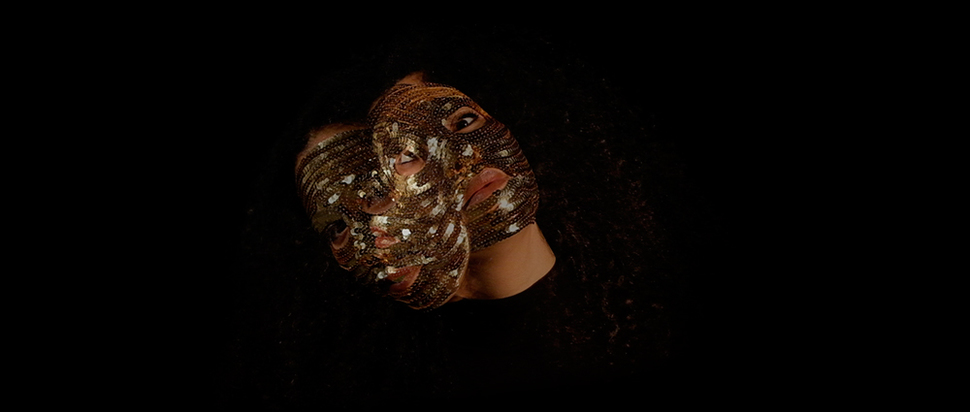Community Access: Jess Brough on Fringe of Colour
Fringe of Colour pushes the possibilities of performance through a hybrid format and focus on community – we catch up with its co-director Jess Brough
Midway through Sheena Patel’s novel I’m A Fan, the unnamed narrator – half-crazed for a man who has abandoned her – interrupts her spiral of self-consuming lust for a monologue on obsession, broadly conceived. Unrequited desire spills into a different need for validation: namely, the invisibility of people of colour in structures that have little interest in them; the desperation to be seen, only to find the gaze insufficient and careless. “For an algorithm not built by us, for a platform not designed for us to attract a cultural system which excludes us, do we commit further harm by performing our Otherness?” the narrator asks. “What are the effects of this alienation, do we even care?” To be a person of colour working within the cultural sector – as artist, as writer, as administrator – is very often to perform, without choice, to an audience that cannot and will not understand you, within paradigms that will never love you back.
Fringe of Colour, founded in 2018 by then-student Jess Brough and now co-directed alongside writer and editor Tomiwa Folorunso and curator and producer Carmen Thompson, well understands the limitations of these paradigms and has, since its beginnings, sought to tear them down. Starting as a spreadsheet that collated shows centring people of colour at the 2018 Fringe, Fringe of Colour blossomed into a free ticket scheme in 2019 and then, amidst the frenzy of the pandemic, an online festival called Fringe of Colour Films, featuring everything from dance and experimental performance to a chaotic in-conversation piece between Nish Kumar and Rose Matafeo. Having taken a year’s hiatus in 2022, Fringe of Colour Films is now back, running this year as a hybrid festival with a new home in Summerhall and a new time slot in June.
“August is very oversaturated in Edinburgh – there's so much going on and its implication is tourism,” Brough says of the festival’s calendar shift. “We wanted to do something where the focus was on the local community.” The online element, they explain, is crucial to staying connected to the festival’s broader audience, and ensuring no one is left behind. “But the in-person is to take up space in the city, which a lot of art organisations run by Black people and people of colour, or for those communities, don't necessarily always have.”

Jess Brough. Credit: Jason Cameron
The notion of community has always been integral to Fringe of Colour, an organisation that, at its heart, has always been about connecting performers and audiences in order to craft spaces of mutual recognition. “One of the main pillars of the festival in 2020 was that these long-lasting white institutions were not serving artists of colour,” Brough says. “The alternative to that is communities supporting each other. Artists can feel like they're making work knowing that the people [to whom] their work is speaking will engage with it. They don't have to explain certain experiences because they're not making it for a white audience.” In this way, Fringe of Colour resets, or entirely dispenses with, the algorithm, rejecting the alienation of performing for a white gaze and building the performance space back up from scratch.
In its hybridity, Fringe of Colour also pushes the generic possibilities of performance, something that festivals like the Fringe – largely bound to the traditional confines of liveness-as-theatre – still struggle to do. Pieces such as Black Gold, the specially commissioned moving image work by Glasgow-based visual artist Ashanti Harris, straddle the line between film, performance and art, interrogating not only the slipperiness of artistic categorisation, but the ability of a festival to experiment with what creative conveyance means. “[She’s] a very textual artist,” Brough explains. “The interesting thing for me is what happens when that is translated to film. Like how do you translate a sculptor? A textile maker? How do you put their process and imagination onto the screen?"

Tomiwa Folorunso. Credit: Tomiwa Folorunso
There’s a loose kind of freedom that has always defined Fringe of Colour’s output; a fuck-it-we-move abandon that recognises the limitations of the Scottish arts industry-as-is and, instead of feeling bound by its constraints, faces them head on. At the outset, these limitations took the form of the myopic programming of the festivals, then the willingness of venues to truly commit to a hands-on accessibility through the free ticket scheme. Now, in the organisation's third year of festival production, Brough and their team remain in a constant state of negotiation with the restrictions of the funding landscape, and the mechanisms of white capitalism that continue, in Brough’s words, to keep people working in the arts “incredibly stressed and overworked and unhappy.
“There is always a gate with anything in the arts,” Brough says. “It’s really, really frustrating. Scotland just needs a better system of arts funding: the people who run these funding bodies don’t understand what we do. Or maybe funding bodies themselves have to answer to such strict limitations, so that then impacts how they engage with the artists who are applying for funding. It's like a trickle down kind of bullshit.”
Across the UK, this means that funding applications continue, implicitly, to be aimed at white-led organisations, treating the creative interests of Black people and people of colour as a value-laden metric rather than a form of decolonial and political practice. It speaks to a broader tension that has long been at play in the UK arts scene, and that has started to show its cracks in the wake of the pandemic: that value and profit-driven models of funding are, fundamentally, incompatible with art based in emotional and social rather than monetary enrichment. That the algorithm is, simply, not built for us.

Carmen Thompson. Credit: Eoin Carey
“You always get these elements [of the funding application] that are like, ‘How does your project speak to diversity and inclusion?’” Brough explains. “And can you imagine having to answer that for a festival that is run by people of colour, for people of colour? It's like, this is just not for us. It's frustrating that we all get set against the same standards, when you just can't think about arts projects in that way.”
And yet, for all the gates it runs up against, Fringe of Colour has been an unstoppable juggernaut in the Scottish arts scene since its inception: it constantly remakes itself according to what its audiences and artists need; it constantly seeks to reform the conditions of its existence. Its shift to early summer and a hybrid format encapsulates the ways in which it has always carved out its own identity in a saturated, yet simultaneously barren, landscape – experimenting with form and positionality to create something distinct from the festivals from which it sprang.
“There’s definitely some pressure because I think people are expecting live performance in an arts festival,” Brough says. “And obviously [in] our programme, that's not the focus at all. But it's not just what we're showing. It's the way people are going to be interacting with things: the events around the screenings, the team of writers we have writing about the films. All of that is performance.” Brough pauses, and smiles. “Everybody is their own performer in the festival.”
Fringe of Colour Films, Summerhall, Edinburgh and online, 23-29 Jun
fringeofcolour.co.uk
